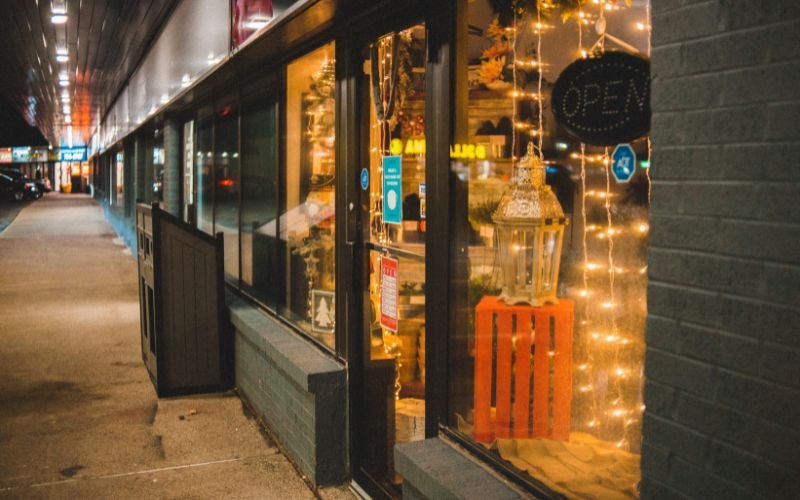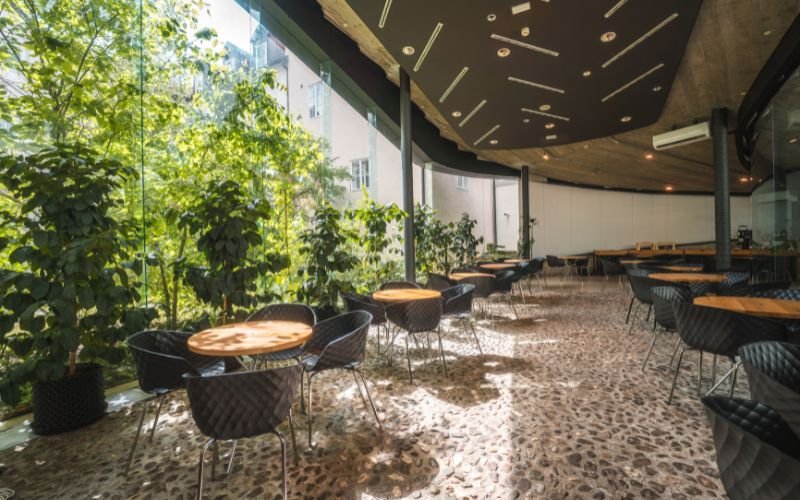The Appeal of Western-Style Storefront Sheds
Western-themed storefront sheds evoke nostalgia and rugged charm. Inspired by frontier towns, these structures blend history with commerce. Businesses and property owners alike choose this aesthetic to stand out visually and connect emotionally with customers. Whether it’s a boutique, café, or general store, a Western-style shed communicates authenticity and character.
Why Businesses and Property Owners Choose Western-Themed Designs
- Brand Differentiation: A Western facade instantly captures attention and differentiates your business from modern competitors.
- Emotional Resonance: The style connects with cultural imagery of resilience, simplicity, and tradition.
- Tourism Appeal: In towns or districts with high visitor traffic, Western-style architecture creates photo-worthy moments that drive foot traffic.
Understanding Western Store Front Architecture
Key Features of Traditional Western Facades
- False front parapets that conceal the roofline and add height
- Wide covered porches that welcome visitors and provide shade
- Large wooden signage areas centered above the entrance
Historical Influence onModern Shed Storefronts
The design borrows from 19th-century American frontier architecture. These buildings were often constructed quickly, using local materials, but with a bold street-facing facade to create a more imposing presence. This practical yet theatrical tradition lives on in today’s Western-themed sheds.
Common Materials Used in Western Design
- Rough-sawn wood: Often pine or cedar, used for siding, posts, and trim
- Corrugated tin: Employed for roofing or accents, offering durability and a vintage look
- Stone or faux stone: Adds texture and a sense of permanence, especially at the base of structures

Design Elements That Define the Western Look
False Front Facades for Added Character
False fronts serve both aesthetic and functional purposes. Visually, they add drama and draw attention from afar. Practically, they provide space for signage and branding while concealing sloped roofs.
Saloon-Style Doors and Rustic Signage
Swinging half-height saloon doors create a strong Western visual cue. Paired with hand-painted wooden signs or branding burned into wood, they evoke old-town authenticity.
Covered Porches, Wooden Posts, and Decorative Trim
A well-constructed porch with sturdy wooden beams and intricate trim enhances the tactile warmth of the shed. These elements invite guests to linger and explore.
Color Palettes That Evoke the Old West
Consider earth-toned hues such as:
- Weathered browns and barn reds
- Dusty beige and faded whites
- Muted greens and charcoal greys
These tones reflect natural materials and environmental wear, emphasizing an aged and authentic look.

Functional and Aesthetic Benefits of Western Shed Storefronts
Curb Appeal That Draws in Foot Traffic
The visual distinctiveness of Western-style sheds is magnetic. The dramatic frontage and cozy porch areas make passersby curious, encouraging them to step inside.
Blending Retail Utility with Visual Charm
Behind the rustic facade, these sheds can be modern and efficient. The structure supports retail shelving, lighting, insulation, and even climate control.
Customizability for Branding and Theme Alignment
The Western canvas is versatile. Businesses can integrate:
- Thematic window displays
- Branded barrels, crates, or signage
- Custom fonts and logo carvings
Planning and Building a Western Store Front Shed
Site Selection and Space Optimization
Choose a site with visibility and pedestrian access. Consider terrain level, sun exposure, and surrounding architecture. Maximize useable space both indoors and on porches.
Choosing the Right Shed Structure for a Storefront Conversion
Options include:
- Prefabricated wooden sheds
- Modified metal-frame buildings with Western cladding
- Custom builds from scratch
Each has trade-offs in cost, flexibility, and construction time.
Working with Builders or DIY Approaches
Some owners prefer turnkey solutions with experienced contractors. Others take a hands-on approach using shed kits and reclaimed materials. Whichever path you choose, ensure structural integrity and adherence to building codes.
Regulations, Permits, and Zoning Considerations
Research:
- Local zoning ordinances for commercial activity
- Setback and height limitations
- Signage restrictions
- Historic district requirements (if applicable)
Failing to address these early can lead to costly delays.
Interior Layout Ideas to Match the Exterior Theme
Rustic Shelving and Wood Fixtures
Use reclaimed wood for shelving, display tables, and countertops. Rough edges and visible grain complement the exterior theme.
Lighting and Flooring Options That Complement the Look
- Lighting: Vintage-style pendant lights, lanterns, or wrought-iron sconces
- Flooring: Distressed wood planks, wide-board laminate, or stamped concrete with a woodgrain texture
Integrating Modern Retail Features Without Disrupting the Aesthetic
Maintain functionality while hiding tech:
- Use wooden enclosures for point-of-sale systems
- Conceal wiring with rustic trim
- Blend security cameras into beam structures
Customization Tips and Enhancements
Adding Authentic Details Like Wagon Wheels or Lanterns
Consider placing:
- Wagon wheels as decor by the entrance
- Antique lanterns on porch beams
- Wooden barrels used as flower pots or trash receptacles
Landscaping Ideas to Complete the Western Setting
- Gravel paths bordered with logs or stones
- Native plants like sagebrush or ornamental grasses
- Split-rail fencing to define property edges
Weatherproofing and Durability for Long-Term Use
- Seal wooden components with UV-protective finishes
- Use treated lumber to prevent rot and pests
- Ensure roof overhangs to minimize rain exposure
Case Studies and Inspiration
Examples of Successful Western Storefront Shed Designs
- A rustic coffee kiosk with cedar siding and a tin awning in Colorado
- A boutique in Arizona styled as an old-time mercantile with swinging saloon doors
Creative Business Uses: From Boutiques to Ice Cream Shops
Western sheds have been adapted into:
- Artisan workshops
- Western-themed gift stores
- Outdoor gear rental hubs
- Ice cream or snow cone stands with vintage flair
Before-and-After Design Transformations
One example:
Before: A plain metal shed with no signage and minimal character
After: Added a false front, painted the siding in barn red, installed a porch with handrails and a custom wooden sign—transforming it into a vibrant Western general store
Maintenance and Upkeep Considerations
How to Preserve Wood Finishes and Exterior Elements
- Re-stain or reseal wood annually
- Inspect for insect damage or warping
- Clean tin and stone surfaces with mild cleaners
Seasonal Care for Porches, Trim, and Rooflines
- Sweep and treat porches regularly to prevent moss and wear
- Check decorative trim after storms or high winds
- Ensure gutters and overhangs stay clear to prevent water damage
Upgrades to Keep the Style Fresh Over Time
- Rotate seasonal decor in a Western theme
- Refresh signage or paint to avoid fading
- Add new props or fixtures to enhance the visual story
Conclusion
Summing Up the Value of Western Storefront Shed Designs
Western-style storefront sheds are more than novelty—they are strategic, functional, and deeply evocative. They offer unique branding opportunities while delivering the practical benefits of traditional shed construction.
Final Tips for Getting Started With Your Own Project
- Start with inspiration photos and rough sketches
- Consult zoning codes before construction
- Choose materials and colors that age gracefully
- Keep the theme consistent from porch to product
A Western storefront isn’t just a design choice—it’s an invitation to step back in time and engage with your business in a whole new way.
Frequently Asked Question
What is a Western store front shed design and how is it used in retail settings?
It’s a building style that mimics old Western towns with wooden facades, overhangs, and rustic finishes used to create a nostalgic, eye-catching storefront.
How can rustic retail aesthetics attract more customers to a storefront?
Rustic aesthetics create a warm, authentic feel that stands out, draws foot traffic, and resonates with customers seeking unique, nostalgic experiences.
What materials are best for building a Western-themed store front shed?
Reclaimed wood, rough-sawn lumber, corrugated metal, aged brick, and natural stone are commonly used to achieve an authentic Western appearance.
How do I incorporate authentic Western design elements into my retail facade?
Use saloon-style doors, barn lighting, vintage signs, wood paneling, and a covered boardwalk to replicate traditional Western architectural features.
What are the cost considerations for designing a Western store front shed?
Costs vary based on size, materials, and detail level, but expect to budget for quality wood, custom signage, weatherproofing, and skilled craftsmanship.
Can I convert an existing store front into a Western shed-style design?
Yes, with façade upgrades like wooden cladding, themed signage, and architectural accents, you can transform a modern structure into a Western-style facade.
What color palettes work best for rustic retail aesthetics?
Earthy tones like browns, tans, deep reds, forest greens, and muted greys work well to evoke a natural, rustic and inviting appearance.
What color palettes work best for rustic retail aesthetics?
Earthy tones like browns, tans, deep reds, forest greens, and muted greys work well to evoke a natural, rustic and inviting appearance.
Are there any permits or zoning issues to consider when building a Western store front?
Yes, local zoning laws and building codes may require permits, especially for structural changes or historical district guidelines.
How do lighting and signage contribute to a successful Western retail shed design?
Gooseneck or lantern-style lighting and hand-painted or distressed wooden signs enhance the rustic charm and improve visibility and branding.
What are some examples of successful businesses using Western store front shed designs?
Western wear shops, antique stores, farm supply retailers, breweries, and themed restaurants often use this style to stand out and reinforce their brand.






